how a 30 barrel brewing system optimize craft brewery’s efficiency
Overview of the 30 Barrel Brewing System
When it comes to commercial brewing, the 30 Barrel Brewing System is a standout choice for businesses looking to scale their operations without sacrificing quality. This system strikes the perfect balance between production efficiency, scalability, and batch consistency, making it a cornerstone for craft breweries that aim to meet growing consumer demand. But what exactly is a 30 Barrel Brewing System, and why has it become so popular in the brewing industry? Let’s dive in and explore!
What is the 30 Barrel Brewing System?
A 30 Barrel Brewing System is a commercial brewing setup designed to produce batches of beer equivalent to 30 barrels per run. For perspective, one barrel equals 31 gallons, meaning a 30-barrel system can produce 930 gallons of beer per batch. That’s a lot of pints! This scale of production is perfect for medium-sized breweries or craft brewers transitioning to larger markets.
These systems typically include essential components such as mash tuns, lauter tuns, brew kettles, fermenters, and conditioning tanks, all designed to handle the larger volume seamlessly. Thanks to advanced engineering and state-of-the-art materials, these systems ensure precision, efficiency, and high-quality output.
Why is it Called a 30 Barrel Brewing System?
The name “30 Barrel” refers to the system’s capacity to produce 30 barrels of beer in one brewing cycle. It’s a benchmark used in the brewing industry to denote production scale, making it easier for manufacturers and brewers to match equipment to production goals.

The Advantages of the 30 Barrel Brewing System
The 30 Barrel Brewing System isn’t just about volume; it’s about producing exceptional beer efficiently. Here are some key advantages that make it a go-to choice for craft breweries:
Production Efficiency
Brewing beer at this scale allows for streamlined production processes. With a 30 Barrel Brewing System, you can produce large quantities of beer in a single batch, reducing the time and labor required compared to brewing smaller batches repeatedly. This efficiency translates to lower operational costs and higher profit margins.
Scalability
One of the standout features of the 30 Barrel system is its scalability. It’s ideal for breweries experiencing growth, as it provides the capacity to meet increased demand without the need for multiple smaller systems. Think of it as future-proofing your brewery.
Batch Consistency
Maintaining consistency is crucial for brand reputation. These systems are designed with precise controls for temperature, timing, and ingredient integration, ensuring that every batch tastes exactly as intended. Your customers will appreciate the reliable quality, and you’ll build trust in your brand.
Cost-Effectiveness
While the initial investment may seem significant, the long-term savings are undeniable. Larger batches reduce the cost per gallon of beer produced, and the durability of these systems minimizes maintenance and replacement costs over time.
Technical Specifications and Design Features of 30 Barrel Brewing System
The technical prowess of the 30 Barrel Brewing System sets it apart from smaller setups. Let’s delve into the specifications that make this equipment a brewer’s dream.
Core Components
- Mash Tun: Engineered for optimal conversion of starches into fermentable sugars.
- Lauter Tun: Designed for efficient wort separation, reducing brewing time.
- Brew Kettle: Provides consistent boiling and flavor extraction.
- Fermenters: High-capacity fermenters equipped with precise temperature controls.
- Conditioning Tanks: Ensure beer achieves the desired clarity, carbonation, and taste.
Material Quality
Most systems are constructed from food-grade stainless steel, ensuring durability, easy cleaning, and resistance to corrosion. Advanced insulation layers maintain temperature stability, which is crucial for brewing precision.
Automation Features
Modern 30 Barrel Brewing Systems often include automated controls, allowing brewers to monitor and adjust brewing parameters through digital interfaces. From temperature regulation to ingredient timing, automation ensures precision and reduces the risk of errors.
Energy Efficiency
These systems are designed with energy-saving features, such as heat exchangers and insulated tanks, to minimize power consumption and reduce environmental impact.

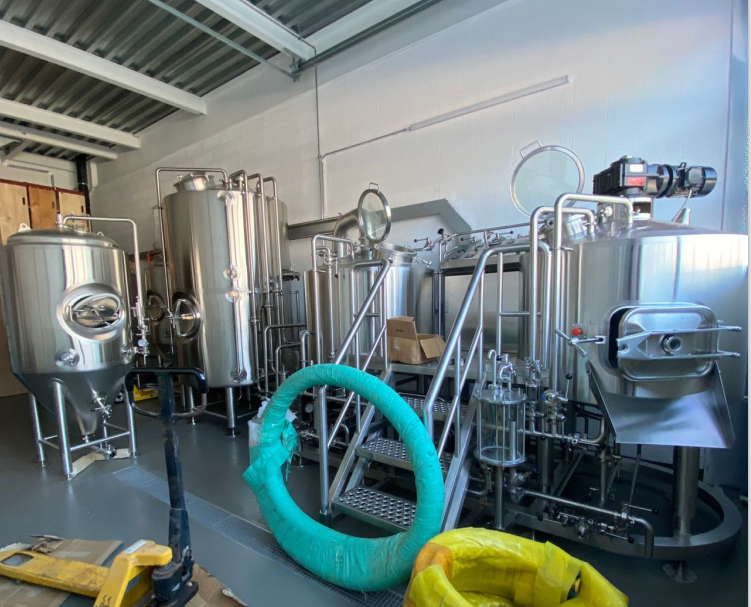
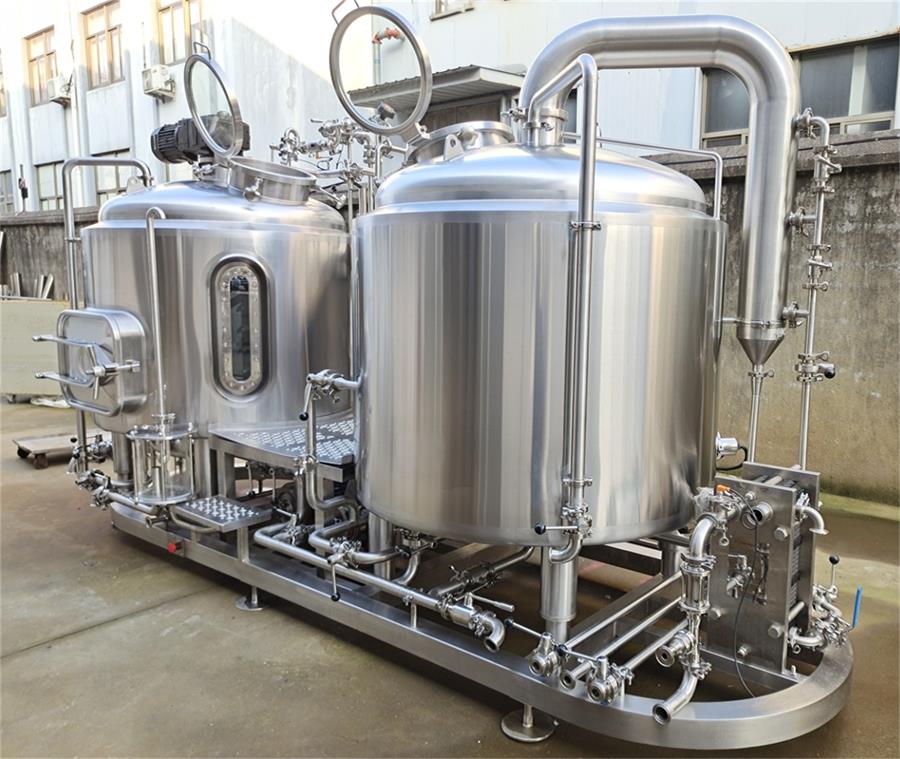
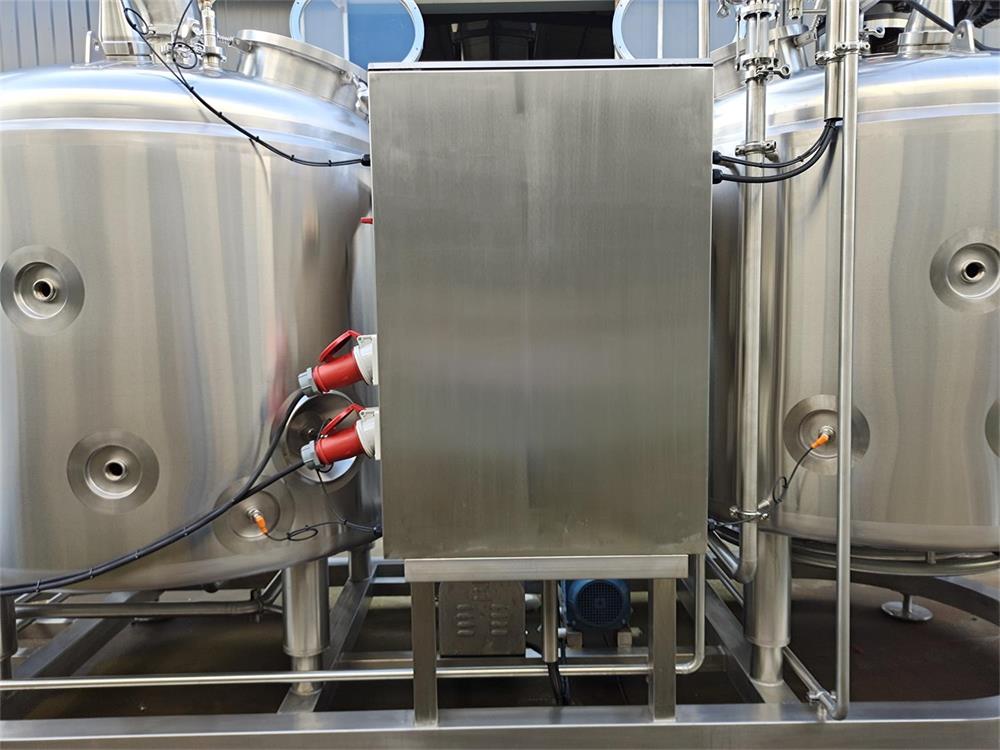
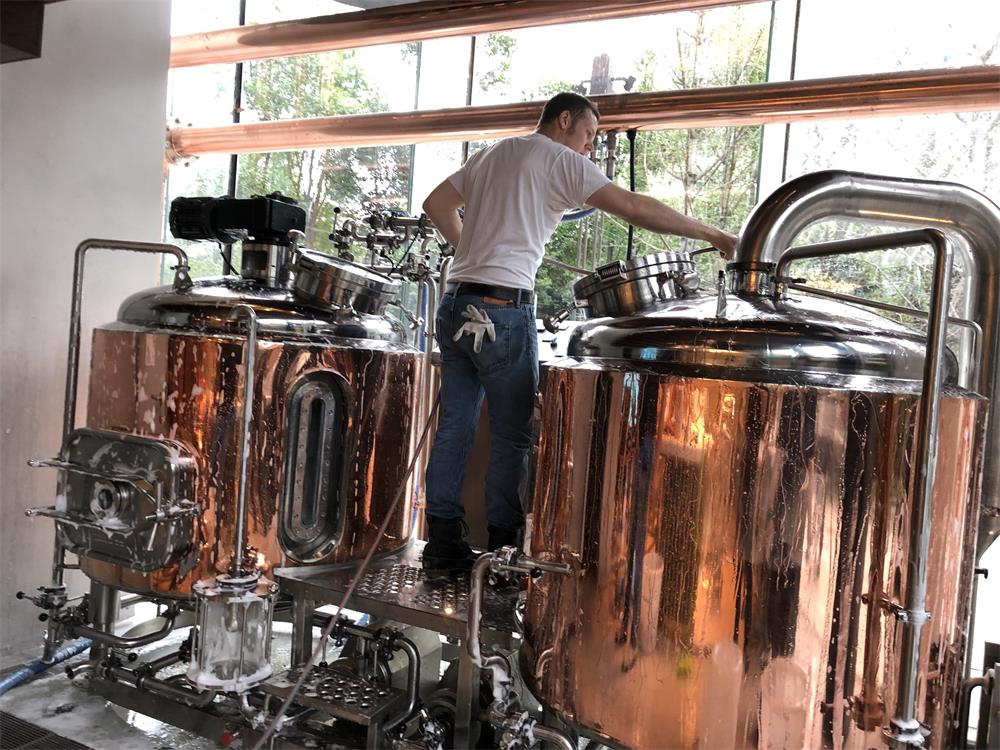
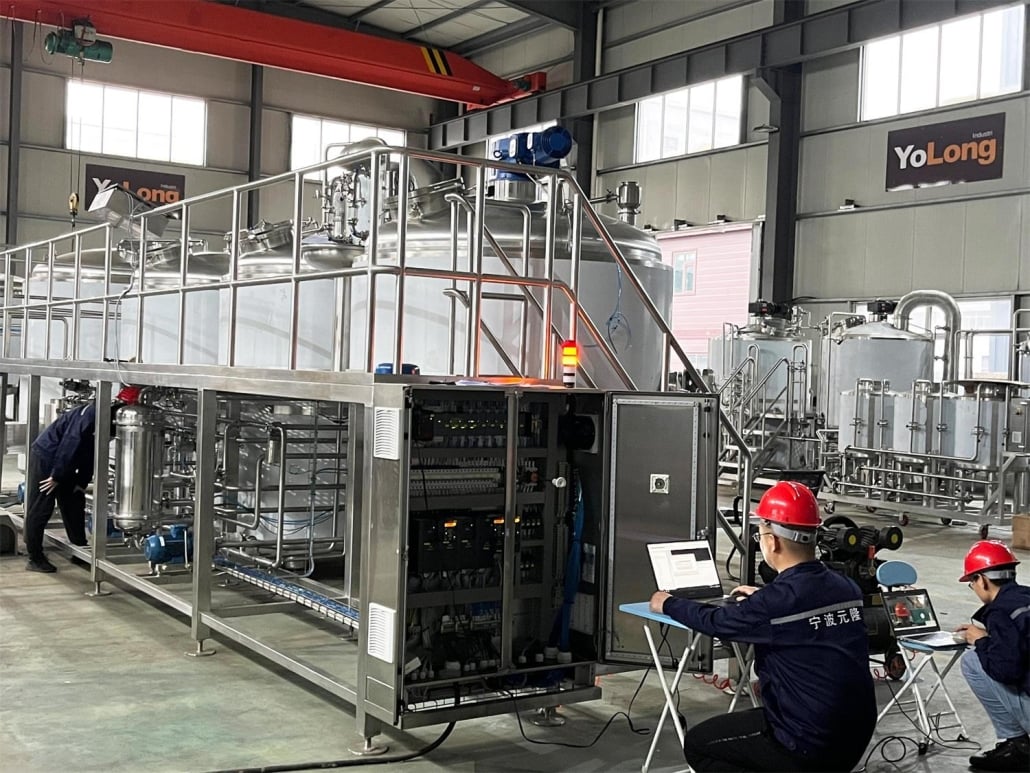
Applicable Scenarios for the 30 Barrel Brewing System
| Scenario | Details |
|---|---|
| Expanding Craft Breweries | Ideal for breweries looking to scale operations to meet rising demand. |
| Brewpubs | Supports production of a wide variety of beers on-site for patrons. |
| Regional Distribution | Enables breweries to supply beer to a broader geographic area. |
| Specialty Beer Production | Suitable for producing seasonal or specialty beers in larger quantities. |
Cost Effectiveness and Long-Term Benefits of the 30 Barrel Brewing System
| Factor | Details |
|---|---|
| Lower Cost Per Batch | Larger batches reduce ingredient and labor costs per gallon. |
| Durability | High-quality materials ensure longevity, reducing replacement expenses. |
| Energy Savings | Efficient designs lower utility costs over time. |
| Revenue Potential | Increased production capacity enables higher sales volumes. |
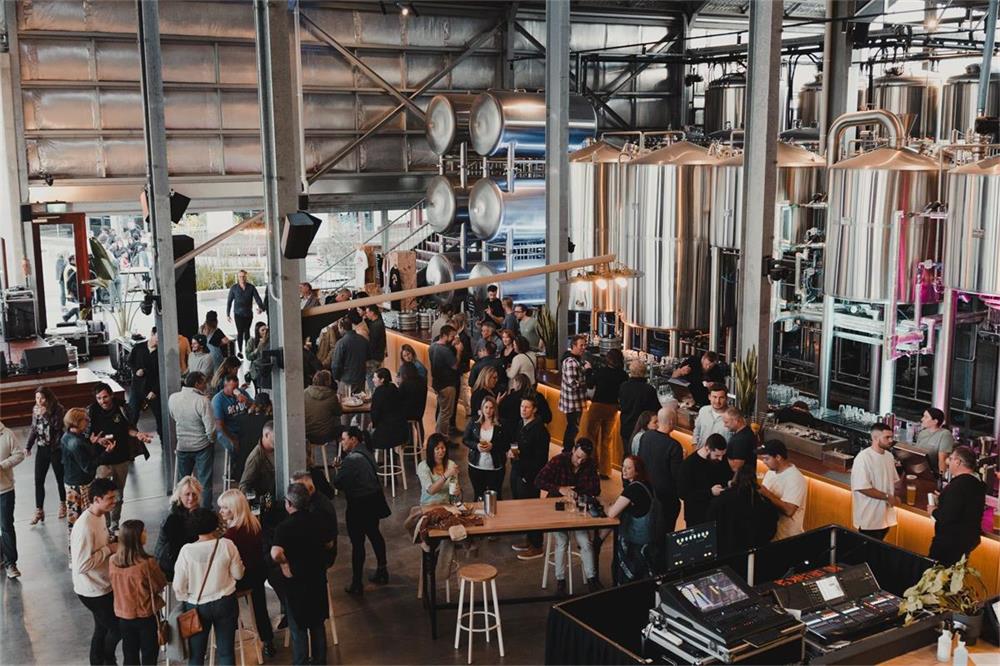
Recommendations for Selecting High-Quality 30 Barrel Brewing Systems
| Criteria | Details |
|---|---|
| Brand Reputation | Research trusted manufacturers with proven track records. |
| Customizability | Look for systems that can be tailored to your specific brewing needs. |
| After-Sales Service | Choose suppliers offering robust maintenance and support services. |
| Warranty | Ensure a comprehensive warranty covers major components. |
| User Reviews | Read reviews from other breweries to gauge satisfaction and reliability. |
FAQ
| Question | Answer |
|---|---|
| What size brewery is a 30 Barrel system suitable for? | Perfect for medium-sized breweries and those looking to scale operations. |
| How much does a 30 Barrel Brewing System cost? | Prices typically range from $150,000 to $500,000 depending on features. |
| What maintenance is required? | Regular cleaning, inspection of seals, and software updates if applicable. |
| Can it produce different types of beer? | Yes, it’s versatile enough for various beer styles and recipes. |
| How long does it take to brew a batch? | Typically 8-12 hours, depending on the recipe and brewing process. |
Frequently Asked Questions (FAQ)
- Q1: What throughput can I expect from a 30 barrel brewing system?
A1: With a 2-vessel brewhouse and 2 brews/day, expect ~60 bbl/day. A 3–4 vessel system can push 3–4 brews/day (90–120 bbl/day), subject to cellar capacity and staffing. - Q2: What utilities are typical for a 30 bbl brewhouse?
A2: Steam (100–150 psi) or electric heating, 208–480V three-phase power (150–300A depending on automation/heat source), 60–90 psi compressed air, process water targeting 3–5 bbl water per bbl beer (best-in-class ≤3), floor drains, and robust makeup air/condensate venting. - Q3: How does a 30 barrel brewing system improve efficiency versus smaller systems?
A3: Larger batch size reduces changeovers and labor per bbl, enables heat recovery (knockout-to-HLT), and supports centralized CIP, cutting water/chemical use and energy per hL. - Q4: What fermentation cellar should pair with a 30 bbl brewhouse?
A4: A practical starting point is 4–6 × 30–60 bbl unitanks plus 1–2 bright tanks. Doubling-up sizes (e.g., 60 bbl FVs) allows double-batching for better brewhouse utilization. - Q5: What KPIs should be tracked to optimize a 30 bbl system?
A5: Brewhouse efficiency, brewhouse yield loss, water and energy intensity, cellar DO/TPO, tank turns per month, CIP cycle time/chemical usage, unplanned downtime, and first-pass quality rate.
2025 Industry Trends: 30 Barrel Brewing System Efficiency
- Heat and CO2 recovery: Wider adoption of vapor condensers, wort heat exchangers feeding HLT, and small-scale CO2 capture for purging/packaging.
- Automation-lite to full PLC: Recipe memory, auto-valving, and inline sensors (flow, DO, turbidity) are standard on 30 bbl brewhouses for repeatability.
- Low-oxygen brewing (LODO) practices: Automated deaerated water integration and CO2/N2 blanketing during transfers improve shelf life for hop-forward beers.
- Sustainability benchmarks: Breweries target ≤3.5 hL water/hL beer and 5–8 kWh/hL brewhouse energy via heat recovery and optimized boils.
- Cybersecurity for OT: Role-based access, audit trails, and segmented networks reduce downtime risks and support multi-site operations.
2025 Benchmarks and Targets for 30 bbl Operations
| Metric | 2022 Typical | 2025 Best-in-Class | Notes / Sources |
|---|---|---|---|
| Water use (hL water/hL beer) | 4.5–7.0 | 2.8–3.5 | Brewers Association Sustainability Benchmarking |
| Brewhouse energy (kWh/hL) | 8–12 | 5–8 | MBAA Technical Q&A; vendor case studies |
| CO2 usage (kg/hL packaged) | 1.2–2.0 | 0.5–1.0 | BA Packaging Benchmarks |
| TPO finished beer (ppb) | 75–150 | <30–50 | ASBC Beer-40 methods |
| Product loss (brewhouse to bright, %) | 3.0–5.0 | 1.5–3.0 | Process control + trub/yeast handling |
| Changeover time (brew-to-brew, min) | 45–60 | 20–35 | 3–4 vessel with recipe automation |
| Unplanned downtime (%) | 6–10 | <3 | Predictive maintenance + remote diagnostics |
Selected sources:
- Brewers Association Sustainability and Packaging resources: https://www.brewersassociation.org
- Master Brewers Association of the Americas (MBAA) Technical Quarterly: https://www.mbaa.com
- American Society of Brewing Chemists (ASBC) Methods: https://www.asbcnet.org
Latest Research Cases
Case Study 1: Heat Recovery and Double-Batching on a 30 bbl Line (2025)
Background: A regional craft brewery scaling distribution sought to cut utilities and increase daily output without expanding floor space.
Solution: Installed a vapor condenser to pre-heat HLT, optimized knockout-to-HLT heat reclaim, and moved to 60 bbl FVs for routine double-batching; implemented recipe-controlled valve sequencing.
Results: Brewhouse energy intensity dropped 17%; water use reduced from 4.6 to 3.3 hL/hL; daily throughput rose from 60 to 90 bbl with the same staffing. Presented at an MBAA district seminar (2025).
Case Study 2: Low-Oxygen Transfers Enhance IPA Stability (2024)
Background: The brewery experienced hop aroma fade by day 60 at ambient distribution.
Solution: Added inline DO meters, automated CO2 blanketing for whirlpool-to-FV transfers, and standardized purge sequences via HMI recipes.
Results: Post-transfer DO declined from ~120 ppb to 30–45 ppb; sensory shelf life extended to ~120 days; returns for “stale” off-notes dropped 55%. Shared in BA Packaging Working Group webinar (2024).
Expert Opinions
- Dr. Tom Shellhammer, Professor, Oregon State University
Viewpoint: “At 30 bbl scale, control of oxygen and thermal profiles is decisive for hop aroma retention—automation that manages purge and boil vigor pays back quickly.” Source: OSU Hop & Brewing research talks/publications. - Mary Pellettieri, Brewing Quality Consultant; Author, Quality Management for Breweries
Viewpoint: “Embed QA into the brewhouse: SPC on critical points, frequent calibration, and documented CIP verification turn scale into consistent quality.” Source: Industry workshops and QA literature. - Ashleigh Carter, Co-Founder and Head Brewer, Bierstadt Lagerhaus
Viewpoint: “Choose tank sizing and schedules for the beer you brew—double-batch into larger unitanks and protect lagering time to keep quality high as you scale.” Source: Conference panels/interviews.
Practical Tools/Resources
- Brewers Association Sustainability Benchmarking and Packaged Beer Quality: calculators, KPIs, SOPs — https://www.brewersassociation.org
- ASBC Methods of Analysis (DO/TPO, bitterness, pH, microbiology): https://www.asbcnet.org
- MBAA Technical Quarterly and webinars: brewhouse automation and heat recovery case studies — https://www.mbaa.com
- Brewer’s Friend Planning Tools: brewhouse efficiency, batch scheduling, water chemistry — https://www.brewersfriend.com
- DSIRE USA Incentives: rebates for high-efficiency boilers, VFDs, heat recovery — https://www.dsireusa.org
- OPC Foundation (OPC-UA) for interoperability planning with cellar/packaging: https://opcfoundation.org
Last updated: 2025-09-01
Changelog: Added 5 FAQs tailored to 30 bbl operations, 2025 trends with benchmark table and sources, two recent case studies on heat recovery/double-batching and low-oxygen transfers, expert viewpoints, and practical resources
Next review date & triggers: 2026-03-01 or earlier if BA releases new sustainability benchmarks, energy/CO2 recovery technologies mature, or ASBC updates oxygen measurement standards
Share this entry
Interested in learning more about Brewing Systems including additional details and pricing information? Please use the form below to contact us!
YOLONG BREWERY EQUIPMENT FAQS
- Commercial Brewery / Craft Brewery / Microbrewery / Nanobrewery
- What is The Difference Between Craft Beer and Industrial Beer?
- The Bespoke Differences In Custom Brewing Systems
- Everything You Need to Know About Kettle Souring
- How to Choose Brewing Equipment for Your business?
- How To Choose The-Best Partner To Build Your Commercial Microbrewing System?
- Two Detection Sensors That You Need To Use In Your Brewhouse System
- Remote Control Applications in Brewing Equipment/How does it work?
- How To Clean Your Brand New Brewery Tanks?

